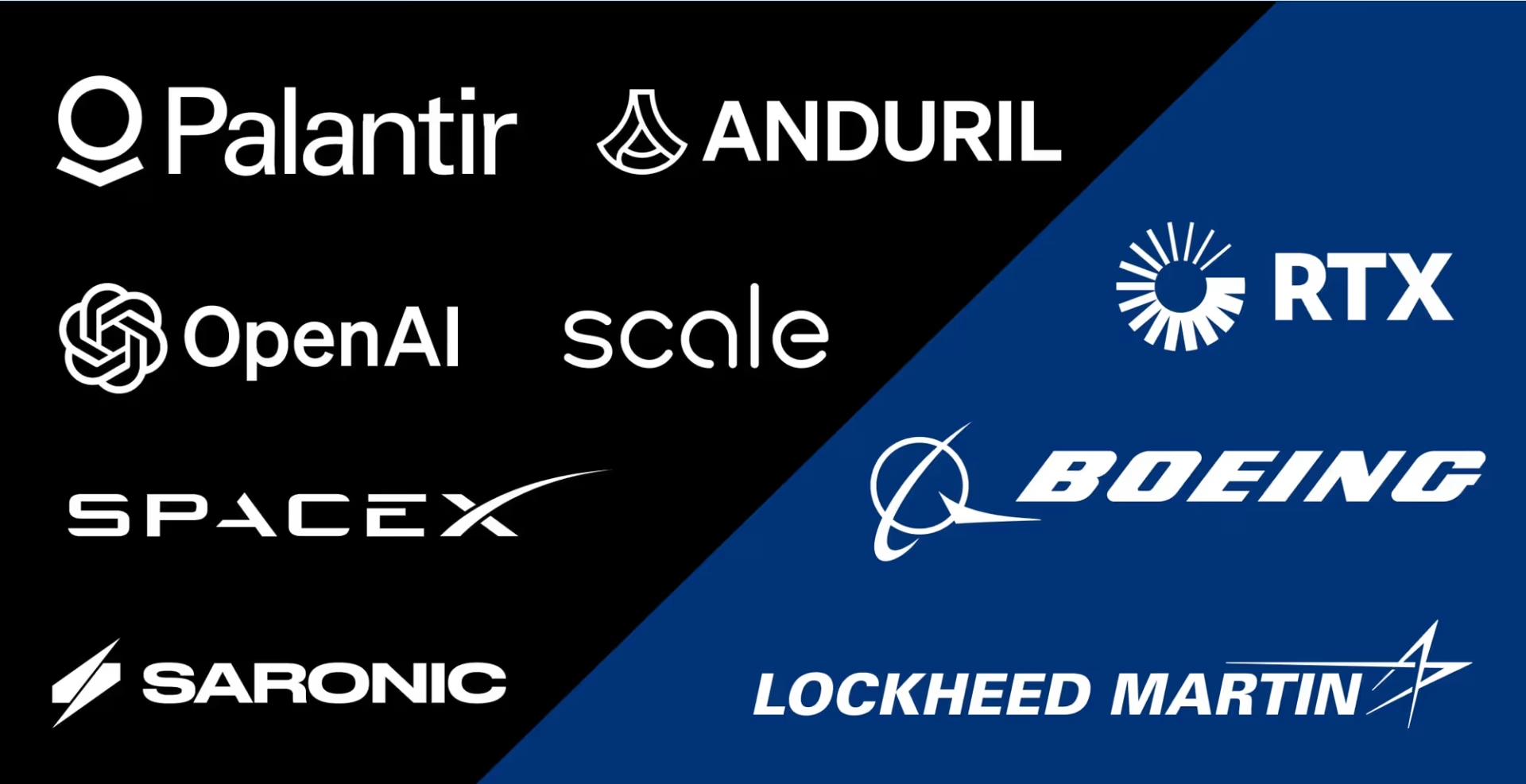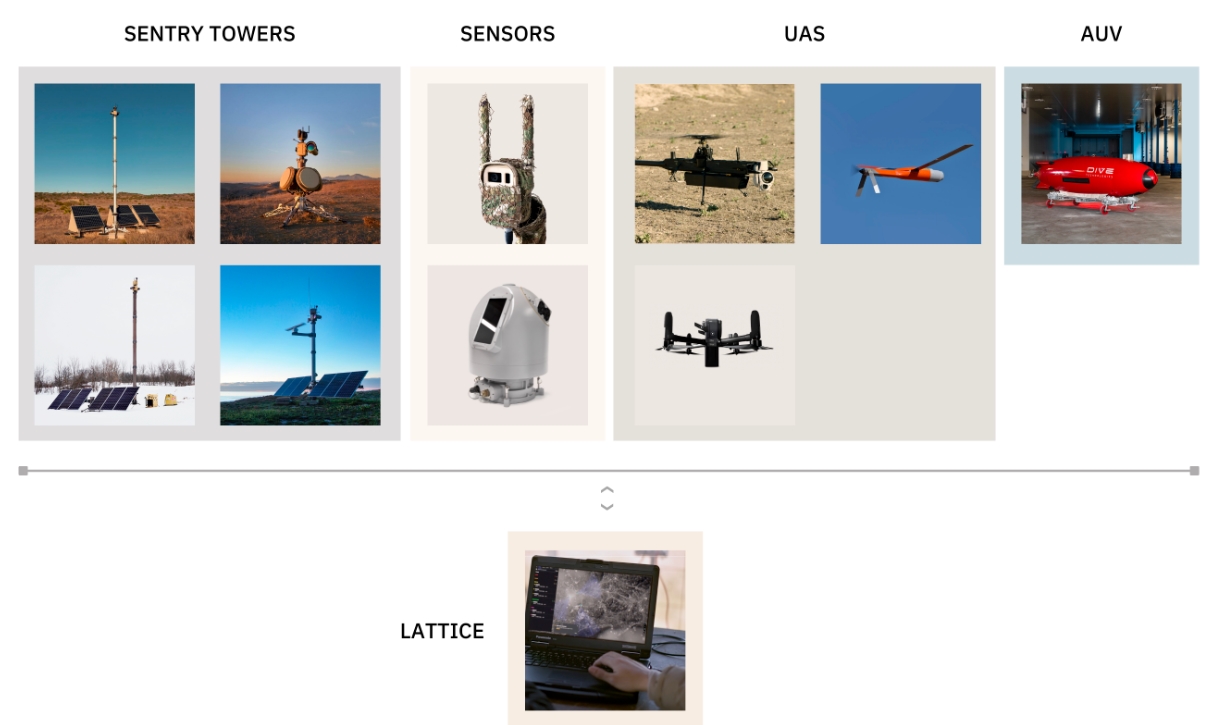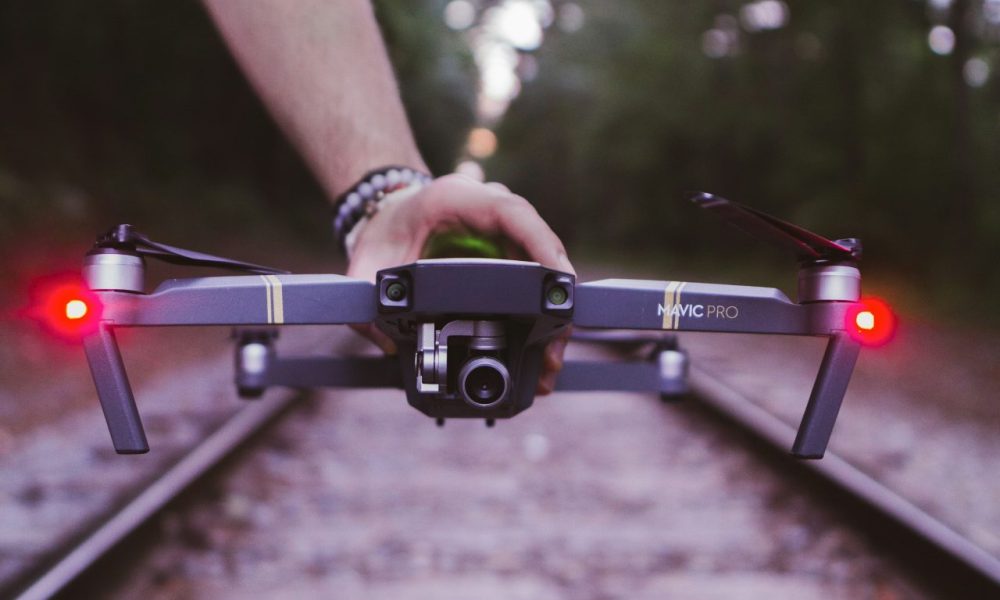Drones As A Strategic Industry
Drones have silently become one of the most transformative technologies of the decade and are getting even more important. From monitoring the environment to farming, deliveries, or military applications, their applications are plentiful.
It is also a sector moving very quickly, with a strong dominance of Chinese suppliers for both ready-to-use drones and drone components. These companies are now increasingly becoming the target of sanctions for their overlap with China’s military and internal security apparatus: first the industry leader DJI in a long series of sanctions, and more recently other Chinese drone companies like Autel Robotics.
Source: Unusual Machines
In response, China has banned the export to the US of drone components like batteries and motors, in retaliation to Washington’s approval of the sale of attack drones to Taiwan.
This is part of a larger trade and tech war between China and the US, with the USA notably sanctioning the Chinese semiconductor industry and China retaliating by restricting the export of key minerals.
Therefore, the drone industry is likely to become a strategic concern, with drone companies based in the West having the opportunity to catch up with their Chinese competitors.
5 Best Drone Companies in 2025
1. Parrot (PARRO.PA)
Parrot is one of the rare drone companies for civilian use that is not based in China, but instead, it is based in Europe. Its civilian product line is focused on photography and mapping, with ANAFI Ai, “the first 4G drone”.
ANAFI USA is Parrot’s drone made in America for use by the French, British, Japanese, and US government agencies, with high zoom levels and thermal cameras. The drones integrate high levels of cybersecurity, using WISeKey’s Secure Elements and a 512-bit key length for encryption.

Source: Parrot
The company is focused on using open-source systems, as these tend to be less vulnerable and more secure than closed and potentially less tested systems. The embrace of open-source philosophy also goes as far as a “Bug Bounty” program, together with YesWeHack, the first European crowdsourced security platform representing more than 22,000 cybersecurity researchers.
So, Parrot is a leader in its niche of high-quality mapping and photography, both for civilian and government use.
As quadcopter drones increasingly become the eyes of the modern military, as demonstrated in Ukraine, this could create new opportunities for the company. This should also include the upcoming new defense and security microdrone.
Parrot also owns Pix4D, a dominant drone modeling software company, with its Pix4Dmapper.

Source: Pix4D
2. AeroVironment Inc.
AeroVironment, Inc. (AVAV +0.23%)
AeroVironment is at the forefront of the advanced suicide drones already deployed by the US military, with the Switchblade loitering ammunition (loitering refers to the ability of the drone/missile to hover in an area for a while, looking for its target, instead of the direct attack MODE of a missile).

Source: AeroVironment
AeroVironment is also offering military reconnaissance drones, 2.2kg tactical drones for infantry, the Nano Air Vehicle small enough to be held in one hand, and high-altitude pseudo-satellite (HAPS) solar gliders.
On the ground, uncrewed ground vehicles (UGVs) are used for demining, removal of IED (Improvised Explosive Devices), SWAT operations, and handling of dangerous materials.

Source: AeroVironment
The company even contributed to the Ingenuity Mars helicopter project; something previously believed to be impossible in the rarefied atmosphere of the red planet.
AeroVironment can then integrate all these systems into a coherent AI-enhanced common control, bringing together all the autonomous systems and relevant data.

Source: AeroVironment
The loitering ammunition is the largest segment ($5B Total Addressable Market – TAM) and is growing rapidly. Overall, the company grew its revenues by 40% in 2023 and expects to keep double-digit revenue growth in the fiscal year 2025.
AeroVironment merged in November 2024 with BlueHalo in an all-stock transaction with an enterprise value of approximately $4.1 billion, almost the same market capitalization as AeroVironment’s. AeroVironment’s shareholders will own ~60.5%, and BlueHalo’s shareholders will own ~39.5% of the combined company.
BlueHalo brings to the company complementary defense-related activities:
- Space communication.
- Direct energy weapons and electronic warfare systems against drones.
- Maritime drones.
- AI tools for drone swarm control and defense against enemy swarms.
The newly merged company is likely to become an increasingly large defense contractor for future military drone swarms.
3. Textron
Textron Inc. (TXT +0.53%)
Textron is an aerospace company quickly expanding into the flying and ground drone markets.
The aviation segment comprises the Bell helicopters both military and civilian models, Textron Aviation‘s private jet and training aircraft, and Textron eAviation, the leader in electrifying aviation since the acquisition of Pipistrel.
It also produces various specialized vehicles, from golf carts to mowers, ATVs, snowmobiles, and airport trucks.
Textron Systems is the segment in charge of drones and military systems like the Aerosonde UAS, the Advanced Reconnaissance Vehicle (ARV) program, and others like the RIPSAW M3 robotic vehicle.

Source: Textron
It is also in charge of the surface effect cargo amphibious transport (SECAT), a 29-crew heavy cargo logistical boat that received an “approval in principle designation” in 2023.
Acquired by Textron in 2018, Howe & Howe is another leader in ground robotic military vehicles.
This acquisition included the SWAT-BOT, a ballistic shield robot, the M5 multi-role track ground robot, which can demine, carry missiles, and counter drones, and the RS2-H1 Small Ground Robotic Vehicle for difficult terrain. It also sells the civilian-use US’s first commercial firefighting robot, Thermite.

Source: Howe & Howe
So, aviation is still the core business of Textron, notably with Bell Textron building a new manufacturing facility for the U.S. Army’s future long-range assault aircraft. However, it has since the late 2010s positioned itself to fill the gap in the supply of the US military in drones, ground robots, and naval logistics as well.
4. Kratos Defense & Security Solutions
Kratos Defense & Security Solutions, Inc. (KTOS +1.15%)
Kratos is a defense company with a focus on 4 segments:
- Drones and other unmanned systems.
- Space communications.
- Cybersecurity, training, and microwave electronics.
- Command and coordination systems, or C5ISR (Command, Control, Communication, Computers, Cyber, Intelligence, Surveillance and Reconnaissance).

Source: Kratos
This puts Kratos at the core of all the more needed innovation in the modern military. Not only can it provide drones for data collection and attacks, but it can also handle data security and its integration into the command structure.
The company is also testing direct energy weapons for the US military, considered by specialists as maybe one of the only options to defend against cheap drone swarms (together with other drones and gun-based short-range air defense).
With the growing use of electronic warfare on the whole electromagnetic spectrum, Kratos is providing EMI/HEMP shielding and cybersecurity solutions to the US military command centers.
Kratos is also involved in the development of experimental UAVs (Unmanned Aerial Vehicles), with 3 different models:
- XQ-58A Valkyrie, stealthy unmanned combat aerial vehicle.
- UTAP-22 Mako, an unmanned tactical aerial platform.
- X-61A Gremlin, for the airborne launch and recovery of groups of Unmanned Aerial Systems (UASs) from existing aircraft.
Lastly, the company is working on driverless ground vehicle solutions, mostly for trucks, which will likely be an important part of future military logistics.

Source: Kratos
In another hot sector of military innovation, hypersonic missiles, Kratos is also at the forefront. This includes testing for extreme environment materials, radars, and collaboration with NASA.
This has resulted in the company being awarded the largest defense contract in its history, 1.45B for the “Multi-Service Advanced Capability Hypersonic Test Bed (MACH-TB) 2.0”.
5. Unusual Machines
Unusual Machines, Inc. (UMAC -15.67%)
For a long time, the Western drone industry was okay with simply relying on Chinese manufacturers to supply them with parts, and they would handle only design, assembly, and software.
With trade tensions and sanctions, this is increasingly a risky business strategy.
Unusual Machines is focused on producing out-of-China FPV (First Person View) drone components like electronics, electric motors, cameras, etc. that are compliant with the National Defense Authorization Act (NDAA).
It notably recently released the Brave F7 FPV Flight Controller, entirely made in America.

Source: Rotor Riot
In 2024, the company acquired FPV market leader Fat Shark which designs and manufactures ultra-low latency video goggles for drone pilots. While the company has a focus on drone races and acrobatic piloting, its military potential is evident after FPV drones became the most crucial weapons system in the war in Ukraine.
Unusual Machines also acquired Rotor Riot, a drone-focused e-commerce marketplace with 127,000+ registered customers.

Source: Unusual Machine
The company has announced that Donald Trump Jr. joined it as an advisor in November 2024, which in the context of the incoming tariffs on China by the Trump administration, is likely to help the company secure more government contracts.
“The need for drones is obvious. It is also obvious that we must stop buying Chinese drones and Chinese drone parts.
I love what Unusual Machines is doing to bring drone manufacturing jobs back to the USA and am excited to take on a bigger role in the movement”.
Donald Trump Jr.
6. “Honorable Mention”: Anduril
Anduril is not publicly traded, so it may not truly be a drone stock accessible to the general public, at least not until its IPO. However, it is also one of the most discussed drone & defense stocks, thanks to impressive innovation in the field of drones, so it deserves to be added to this list.
In part, this is because its founder is the high-profile and successful entrepreneur Palmer Luckey, the founder of the VR company Oculus later sold to Facebook.
What made Anduril so appealing to media and investors is a clear intent to “disrupt” the defense industry, looking to practice a strategy not dissimilar to Elon Musk’s Tesla and SpaceX.
With investors and founders linked to SpaceX and Peter Thiel’s intelligence software Palantir, this could be more realistic than many might think (and help build connections with the military and intelligence decision-makers).
The idea is to rely on first-principle innovation, open-source technology, AI, and other concepts popular in the world of tech and software to cut costs and radically speed up the often years-long (or decades-long) innovation process in the defense industry.
Palantir and Anduril are reported to form a consortium to bid together on defense tender, which could include as well SpaceX, OpenAI, Saronic, and Scale AI. This, of course, might ruffle a few feathers in the defense industry’s largest contractors but might be required as the adversaries of the USA are quickly leveraging the drone revolution to inflict severe costs on the US military all over the world.

Source: Maginative
It might also counter-balance the decades-long trend of consolidation in the defense industry, which is increasingly criticized for causing inefficiency, monopoly-driven excessive prices, and failure to innovate, especially from the top 5 largest defense companies.
This translates into an impressive array of products for a company founded in 2017. Notably, the Roadrunner, a reusable, vertical take-off and landing (VTOL) Autonomous Air Vehicle (AAV). It is expected to work as a reusable drone interceptor for large drones. While the price tag in the “low six-figure” is not particularly cheap, it is a lot cheaper than the currently used interception missiles costing one or several million dollars a piece.
The company will also provide fixed installations for base defenses, maritime detection systems like WISP (AI-enabled 360-degree infrared surveillance), the autonomous surveillance drone Ghost, the autonomous underwater vehicle Dive-LD (with 3D printed exterior), the loitering ammunition Altius, and bespoke solid rocket motors – SRMs.
Later down the road, Anduril is looking to develop the Autonomous Air Vehicle (AAV) Fury.
For smaller and cheaper drones, Anduril is developing an integrated threat detection for all domains at once, using AI, called “Lattice OS“, integrating software, AI, and sentry systems.

Source: Generalist
Lattice will integrate them into the smaller drone Anvil, which could destroy small quadcopters by ramming into them, bringing the interception costs to almost zero, down from the thousands of dollars, or sometimes hundreds of thousands it currently costs to intercept them (10x to 1,000x the cost of the targeted drone).
So from attack drones to low-cost anti-drone systems, and with extensive connections in the upcoming Trump administration with a Silicon Valley consortium of private companies, Anduril is a serious contender in becoming a prime contractor of the US military for disruptive drone technologies, something investors in publicly-listed drone companies should be aware of.
